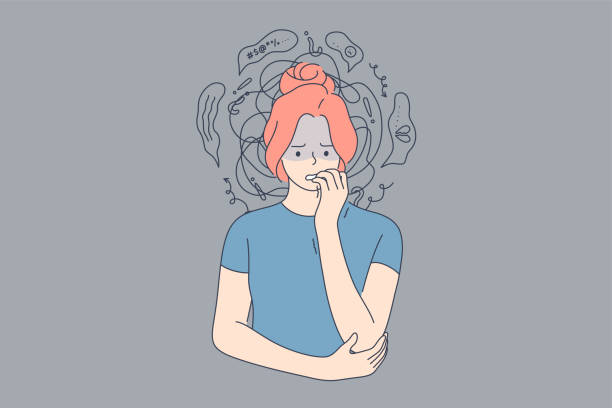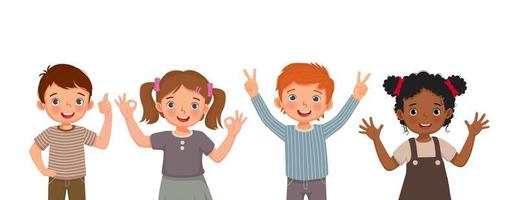Round 2 Research: Why do we see a change in people’s body language when they are stressed or anxious? Why is it so hard to hide it.
In the previous Blog Post, I not only explained the connection between our mental health and physical health and how they can impact eachother both positively and negatively but how we can improve both our mental health and our physical health through healthy habits. We also took a look into the early signs of mental and physical illness. In this blog post, we will dig deeper into the early signs of poor mental health, as an example, your body language, and compare that to how that affects our physical well being.
- Body language can express a lot of what we’re feeling and thinking without using our words, good body language radiates a healthy body and mind as opose to constant poor body language which can actually show early signs of mental illness, ex. anxiety, depression, stress. (1)
- Our bodies react to stress with chemicals known as stress hormones, causing what is known as the flight-or-fight response. When this happens, your heart rate and breathing increase and your blood pressure rises, making you more alert. Sugar floods into your blood, giving you more energy and changing the physical impression you give to others. (2)
- Long-term stress can eventually cause health problems. Many stress symptoms are easily visible.(2)
- Stress not only casues evident changes in one’s body language, it can harm your immune, digestive and reproductive systems and increase the risk of heart attack and stroke. It can even “rewire” the brain over time, leaving you more prone to anxiety, depression, and other mental health problems. (2)
- When feeling stressed, nervous or anxious, lot’s of adrenaline is released into you body naturally, when there is extra adrenaline in the body, our body starts finding ways to release this through body language such as pacing or biting your nails since it’s soothing the adrenaline and stress hormones. Oftentimes, we don’t even realize we are showing signs of nervousness. It is just our body’s natural, unconscious way of relieving the nervousness we are feeling. (3)

As previously mentioned, there are lots of signs of being nervous and these signs of nervous body language can vary between different people.
- Pacing is a very common sign of being nervous stressed and anxious. It can include pacing around the room when talking to a crowd or people, or just general pacing.
- Fidgeting is another commom sign of mental health problems which can be something that people do in big moments of anxiety or even sometimes excitement, but it is also something that is often done in times of discomfort. (3)
- Cracking knuckles, this is something that even I do when I feel a little nervous about something, but for lot’s of people, it’s the first thing they do in moments of anxiety and normal times. This is one of the unhealthiest things you can be doing in times of anxiety and stress because of its long term effects. (4)
- Crossed arms mainly represent signs of discomfort and because of that closed body language, it is one of the most obvious signs of discomfort in any situation.
- Bitting nails is something that I witness a lot around school and it is another sign that can easily turn into a habit.
- Avoiding eye contact shows that if a person is uncomfortable, they will most likely look away or break eye contact. Also if you are not feeling confident or sure, it is much less likely that eye contact will be maintained, and it’s very easy to notice. (3)
- Sweating is caused when anxiety scares your sympathetic nervous system so that you can be prepared to react, which raises your heart rate and your body temperature. Sweating is a stress response that helps cool your body so you don’t overheat. (5)
- Restless leg is very common among all ages and is something people don’t often notice they’re doing when they’re stressed. A restless leg consists of the shaking or constant swaying of the leg whihle sitting or standing. Having a constant restless leg is actually considered a syndrome. (6)
- All of these signs can potentially lead to long term mental and physical health diseases depending on the severity of these mental health problems.
- On the contrary, postive body language like standing up straight, eye contact, nodding and smilling during an interaction will radiate confidence and happiness. (7)
- Even though it’s cliche, positive body language will help you fake it until you make it (which can be confidence, making a good first impression, etc.), overall improving your mental health which can positively impact your physical health. (8)

- Being aware of body language and facial expressions and mean is super important, both personally and even professionally.
- Understanding the body language signs of others, can help you to understand them and work with them better, since you’ll be able to see when they might feel uncomfortable, or when they are confident.
- Being self-aware is also really important in life, since then you’ll be able to monitor and adapt your non-verbal actions and expressions to make yourself more approachable, show respect and show that you’re a good listener and team player.
- Being aware about both your positive and negative body language can definetly work in your favour. (8)
With all these points being stated, it is clear how your body language can impact the impression you make on others, your mental health and how anxiety habits can be physically harmful. There are multiple way we can improve our body language to improve our life. Because body language has an enourmous impact on our mental health, it has an indirect, but prominent connection to our physical health, wether that’s positively or negatively.
So, now that you know the effect of body language and why we may react the way we do, next we’ll be taking a look on poor mental health resulting in physical diseases and how too much stress can be the cause of getting physically ill at a young age.
SITES:
1.Caskey, Johanna. “Body Language: The Science of Nonverbal Communication Skills.” RSS, LIFE Intelligence, 1 Apr. 2021, https://www.lifeintelligence.io/blog/body-language-the-science-of-nonverbal-communication-skills.
2.“Stress Symptoms, Signs, and Causes.” HelpGuide.org, https://www.helpguide.org/articles/stress/stress-symptoms-signs-and-causes.htm.
3.“Stress Symptoms, Signs, and Causes.” HelpGuide.org, https://www.helpguide.org/articles/stress/stress-symptoms-signs-and-causes.htm.
4.Admin. “Signs of Nervousness & Nervousness Body Language.” The Center for Hyperhidrosis, The Center for Hyperhidrosis, 14 Sept. 2020, https://www.hyperhidrosiscumc.com/signs-of-nervousness-nervousness-body-language/.
5.District, Northern Inyo Healthcare, et al. “Why You Shouldn’t Crack Your Knuckles.” Northern Inyo Healthcare District, 27 Jan. 2021, https://www.nih.org/nihd-news/2021/january/why-you-shouldn-t-crack-your-knuckles/.
6.“‘Why Do I Sweat When I Get Nervous?” 6 Common Sweating Triggers.” Thompson Tee, https://thompsontee.com/blog/nervous-sweating-triggers/.
7.“Restless Legs Syndrome.” Mayo Clinic, Mayo Foundation for Medical Education and Research, 1 Mar. 2022, https://www.mayoclinic.org/diseases-conditions/restless-legs-syndrome/symptoms-causes/syc-20377168.
8.Kishore, Kamal. “Positive Body Language with Examples.” Harappa, 16 Aug. 2021, https://harappa.education/harappa-diaries/positive-body-language-with-examples/.

